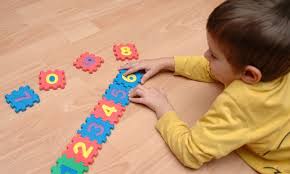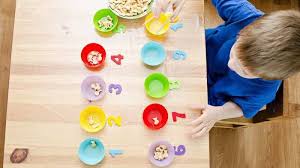Introduction and Importance in Facilitating Creativity
Mathematics and numeracy lay the foundation for logical thinking and problem-solving skills in young children, and these areas are crucial for fostering creativity. Through activities like counting, sorting, measuring, and pattern recognition, children learn to think analytically while also using their imagination. Mathematics is not only about numbers but also about relationships, structures, and patterns, all of which contribute to creative thinking. As McDonald (2019) notes, early experiences with mathematics build the cognitive skills necessary for understanding complex concepts later in life. In early childhood education, fostering mathematical thinking allows children to engage in hands-on exploration, which encourages them to make connections and develop creative ways to solve problems. The goal is not only to learn numbers but also to develop mathematical reasoning that sparks creativity (Fleer & Raban, 2016).
Creativity Theories and Perspectives
Creativity in mathematics stems from the ability to explore multiple solutions to problems and use imagination to think about abstract concepts. According to McDonald (2019), mathematical thinking involves both cognitive development and creative expression. Piaget’s cognitive theory of development also relates well here, as he proposed that children actively construct knowledge through interaction with their environment. In mathematics, this means experimenting with patterns, quantities, and spatial relationships. Fleer and Raban (2016) emphasize that young children develop mathematical skills through play-based learning, where creativity and imagination help children make sense of the mathematical concepts they encounter. Furthermore, the Australian Association of Mathematics Teachers & Early Childhood Australia (2023) highlights that mathematics in early childhood should promote exploration and creativity, allowing children to approach problems in diverse ways.

Resources, Materials, and Digital Technologies
In mathematics and numeracy, hands-on materials like counting blocks, measuring cups, and pattern tiles encourage exploration and creativity. Digital tools such as interactive apps, like Tiggly Math or Numberblocks, offer fun ways for children to explore basic numeracy concepts. These tools allow children to practice counting, addition, and subtraction in engaging ways. According to McDonald (2019), using both physical and digital resources helps to create a rich mathematical environment where children can experiment, manipulate objects, and visualize concepts. Additionally, incorporating real-world applications, such as measuring ingredients in cooking, enhances children’s understanding of math in everyday life.
Learning Experiences
0–2 years: Children explore counting with large, colorful blocks, helping them develop an early understanding of number recognition and quantity (McDonald, 2019).
2–3 years: Toddlers engage in sorting activities, classifying objects by size, color, or shape, building their understanding of patterns and categories (Fleer & Raban, 2016).
3–5 years: Children use pattern blocks to create and extend patterns, supporting their recognition of symmetry and sequential thinking (Howard & Mayesky, 2022).
6–8 years: Children engage in simple addition and subtraction using virtual apps like Tiggly Math, developing early computational skills and problem-solving strategies (Australian Education and Research Organisation, 2023).
Critical Reflection and Evaluation
Reflecting on the sorting activity for toddlers (2–3 years), it was effective in helping children understand basic mathematical concepts like categories and patterns. However, some children had difficulty following the sorting rules. To improve, I would provide clearer instructions and use visual examples to guide them. For the virtual app activity for children aged 6–8, they enjoyed the interactive nature of the app but were initially hesitant to use it. In future sessions, I would offer more time for them to get familiar with the digital tools and guide them through the app to ensure they’re getting the most out of the experience. More hands-on, tangible experiences alongside digital ones would help them grasp the mathematical concepts better.

